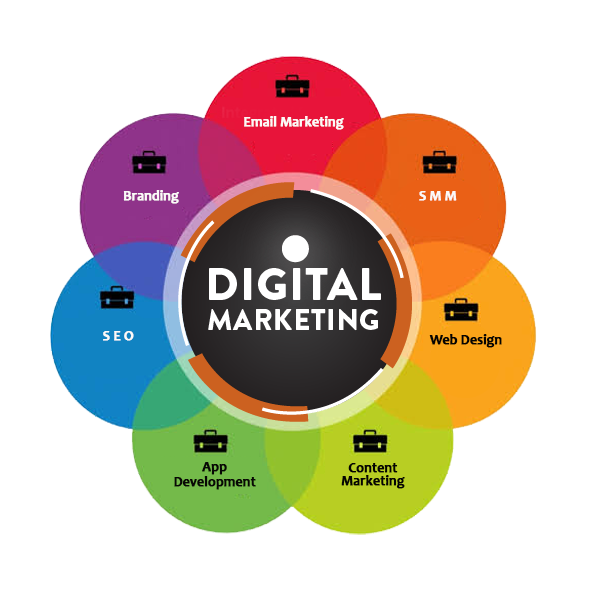Browsing the Future: Fads Shaping Digital Marketing Today
Browsing the Future: Fads Shaping Digital Marketing Today
Blog Article
Analyzing Data to Enhance Your Digital Advertising And Marketing Efficiency
In a period where electronic impacts are important, examining data is paramount to enhancing your electronic marketing efficiency. With metrics such as Click-Through Rates and Conversion Fees, marketers can derive workable understandings that drive meaningful engagement. Tools like Google Analytics and heatmaps provide a granular sight of audience habits, making it possible for a targeted strategy to web content creation. This data-driven approach not just lines up advertising efforts with consumer preferences but likewise takes full advantage of Return on Financial investment. Comprehending just how to continually adapt and monitor to these insights is important for keeping agility in a swiftly progressing digital landscape. Interested about taking your advertising and marketing to the next degree?
Identifying Secret Metrics

CTR shows the percentage of users that click on an ad or web link, providing understanding into the efficiency of innovative assets and targeting techniques. ROI, on the other hand, examines the productivity family member to the costs incurred, providing a detailed view of the financial impact of marketing activities.
Additionally, other crucial metrics like Consumer Acquisition Expense (CAC) and Lifetime Worth (LTV) use deeper insights into the cost-effectiveness and long-lasting worth generated from advertising efforts. By thoroughly tracking these KPIs, companies can make data-driven decisions to improve and improve their electronic advertising and marketing strategies.
Recognizing Customer Habits
Building on the structure of essential metrics, a thorough understanding of customer habits gives a nuanced point of view that drives much more effective electronic marketing strategies. By analyzing exactly how customers communicate with your on-line systems, you can discover patterns and choices that notify targeted advertising and marketing efforts. This entails scrutinizing different touchpoints such as website navigation, web content consumption, and social networks engagement.
Comprehending consumer behavior begins with segmenting your audience based on market, psychographic, and behavior information. This segmentation enables individualized marketing, dealing with specific demands and preferences of unique groups. As an example, identifying single buyers versus regular customers can aid tailor advertising deals and interaction approaches appropriately.
In addition, mapping the consumer journey is critical. This involves tracking the steps a client extracts from first recognition to last acquisition, and also post-purchase involvement. By doing so, you can identify potential drop-off points and optimize these areas to boost customer retention and conversion rates.
Furthermore, assessing feedback and evaluates deals direct understandings into consumer fulfillment and locations for enhancement. Recognizing the inspirations, pain points, and assumptions of your audience enables the crafting of even more resonant and effective marketing messages, eventually driving higher engagement and loyalty.
Leveraging Analytical Devices
Utilizing the power of analytical link devices is important for optimizing digital advertising and marketing efficiency. These tools provide granular understandings right into numerous elements of marketing campaigns, from target market engagement to conversion prices.
The energy of analytical devices expands beyond mere information collection. They promote the recognition of trends, patterns, and anomalies that could or else go unnoticed. For instance, heatmaps can expose customer communication with internet site aspects, while A/B screening devices can figure out have a peek at this website the performance of various web content variations (Digital marketing). In addition, predictive analytics can anticipate future fads, enabling marketing professionals to remain ahead of the curve.
Integrating analytical devices with various other digital marketing systems, such as social networks and email advertising software program, produces a cohesive environment for detailed performance tracking. This all natural sight ensures that all aspects of an electronic advertising method are aligned and optimized. In a progressively affordable digital landscape, the ability to utilize logical tools properly can be the determining aspect between success and stagnancy.
Enhancing Material Strategy

One trick element of improving content approach is recognizing target market preferences and behavior. Analytics can expose market info, optimal interaction times, and preferred web content formats, such as infographics, video clips, or blogs. This expertise enables marketing experts to tailor their web content to satisfy the details requirements and passions of their audience, therefore raising the possibility of interaction and conversion.
In addition, continual surveillance and evaluation of material performance offer understandings into what is functioning and what requires adjustment. As an example, A/B testing various headings or calls-to-action can produce important information on aspects that drive the a lot of involvement. Furthermore, tracking content efficiency across different channels helps in maximizing circulation methods, guaranteeing that the right material gets to the best target market through the most efficient systems.
In significance, data-driven content technique enhancement is a cyclical process of evaluation, improvement, and execution, tailored helpful site towards supplying optimal worth to both the company and the target market.
Gauging Project Success
Determining campaign success is important for understanding the effectiveness of digital marketing initiatives and making notified decisions for future efforts. Key performance indicators (KPIs) are essential metrics that give insights right into campaign efficiency.
To efficiently gauge campaign success, it is crucial to set clear, measurable objectives from the start. These goals ought to be aligned with broader organization goals and give a benchmark for reviewing performance. Making use of tools like Google Analytics, social media sites analytics, and CRM systems can promote the tracking of these KPIs and supply real-time data insights.
Assessing this data helps recognize which elements of the project are working well and which need changes. A low CTR might show that ad duplicate requires improvement, while a high CAC could suggest a demand for targeting optimization. Continual tracking and evaluation guarantee that marketing efforts are responsive and dexterous, inevitably resulting in more reliable and reliable projects.
Verdict
In verdict, the optimization of digital advertising efficiency with information evaluation is important. Constant surveillance and data-driven modifications ensure that marketing initiatives straighten with evolving fads, eventually driving greater Return on Investment (ROI) and attaining calculated objectives.

Report this page